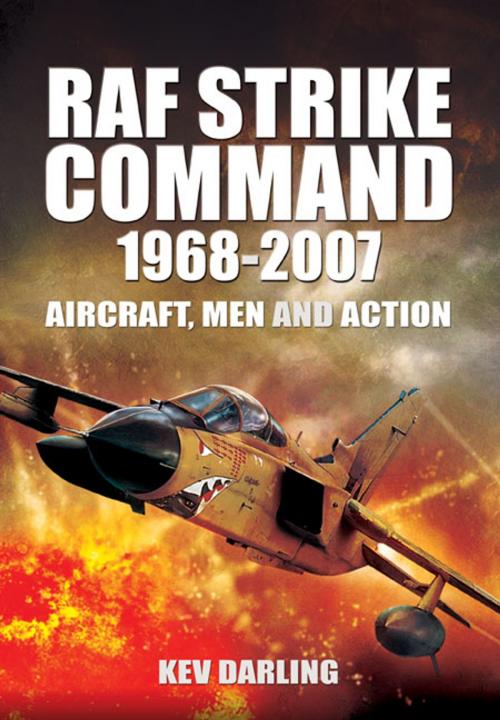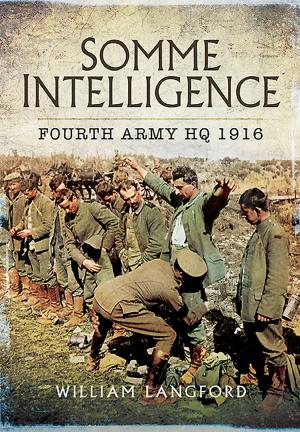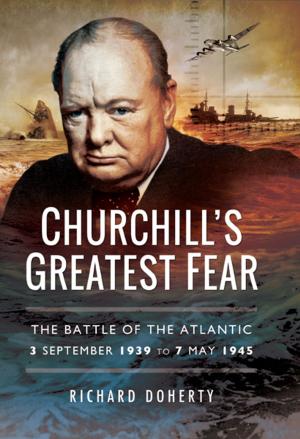| Author: | Kev Darling | ISBN: | 9781783378548 |
| Publisher: | Pen and Sword | Publication: | January 19, 2013 |
| Imprint: | Pen and Sword | Language: | English |
| Author: | Kev Darling |
| ISBN: | 9781783378548 |
| Publisher: | Pen and Sword |
| Publication: | January 19, 2013 |
| Imprint: | Pen and Sword |
| Language: | English |
In 1968 a decision was made to combine the RAF Commands that had become famous in World War Two. Thus Fighter,Bomber, Coastal, Air Support and Signals Commands were combined into the single Strike Command. This amalgamation was to see service throughout the remaining years of the Cold War and action in the Falklands and the Middle East in Operations Desert Shield, Desert Storm and Granby.
This book looks at the origins of the World War Two Commands and their outline histories until 1968. The organizational change caused re-equipment, base changes and increasing economic constraints – an all-too familiar story. The Royal Navy was now responsible for the UK’s nuclear deterrent in the form of their Polaris submarines, so the RAF’s V-Bomber Force were now relegated to tanker operations, with the exception of the lone Vulcan that was sent to the Falklands conflict. The Commands fleet of fast jets became more adaptable, with single types able to assume the roles of fighter, bomber,reconnaissance and maritime attack. The aircraft also become multinational in their design and manufacture as Britain’s postwar lead in aircraft design had been frittered away by years of thoughtless government and our aircraft manufacturing devolved into a single company. Apart from the brilliant Harrier which the US continues to develop and build, other aircraft flown by the Command were from European syndicates, the Tornado and Jaguar being examples. The US supplied the transports in the form of the faithful Hercules and Europe most of the helicopter fleet.
This book looks at the operations that took place during Strike Commands existence, the aircraft they flew and the men who flew them. It is a tribute to the fast-dwindling strike power of the Royal Air Force.
In 1968 a decision was made to combine the RAF Commands that had become famous in World War Two. Thus Fighter,Bomber, Coastal, Air Support and Signals Commands were combined into the single Strike Command. This amalgamation was to see service throughout the remaining years of the Cold War and action in the Falklands and the Middle East in Operations Desert Shield, Desert Storm and Granby.
This book looks at the origins of the World War Two Commands and their outline histories until 1968. The organizational change caused re-equipment, base changes and increasing economic constraints – an all-too familiar story. The Royal Navy was now responsible for the UK’s nuclear deterrent in the form of their Polaris submarines, so the RAF’s V-Bomber Force were now relegated to tanker operations, with the exception of the lone Vulcan that was sent to the Falklands conflict. The Commands fleet of fast jets became more adaptable, with single types able to assume the roles of fighter, bomber,reconnaissance and maritime attack. The aircraft also become multinational in their design and manufacture as Britain’s postwar lead in aircraft design had been frittered away by years of thoughtless government and our aircraft manufacturing devolved into a single company. Apart from the brilliant Harrier which the US continues to develop and build, other aircraft flown by the Command were from European syndicates, the Tornado and Jaguar being examples. The US supplied the transports in the form of the faithful Hercules and Europe most of the helicopter fleet.
This book looks at the operations that took place during Strike Commands existence, the aircraft they flew and the men who flew them. It is a tribute to the fast-dwindling strike power of the Royal Air Force.















